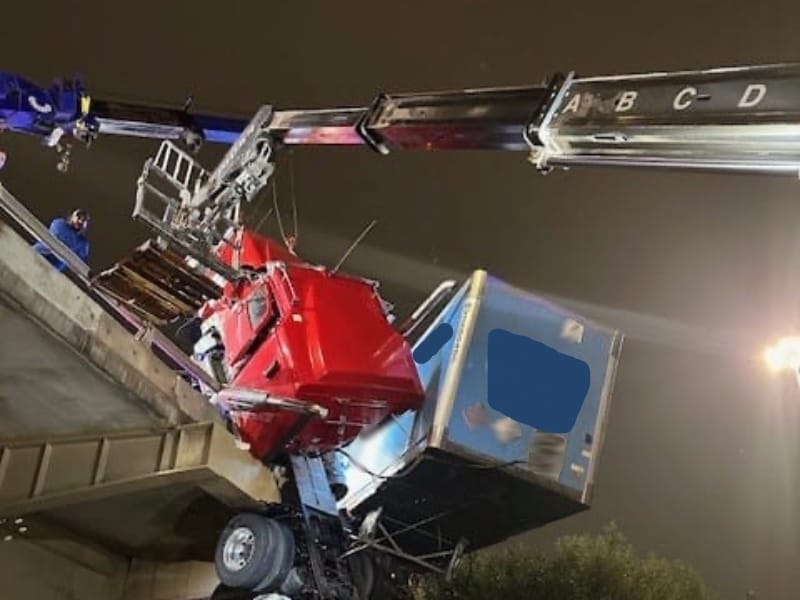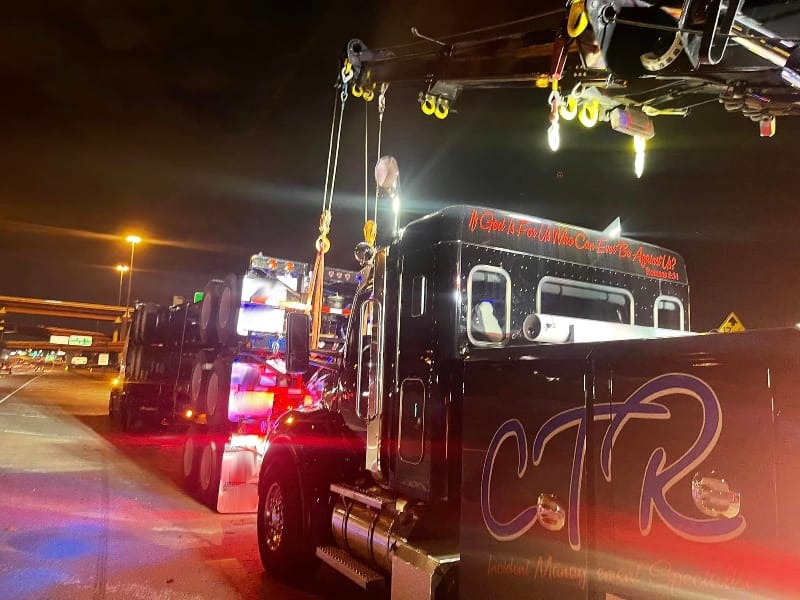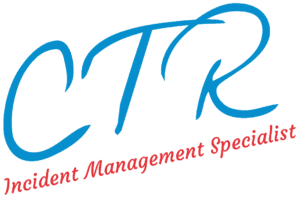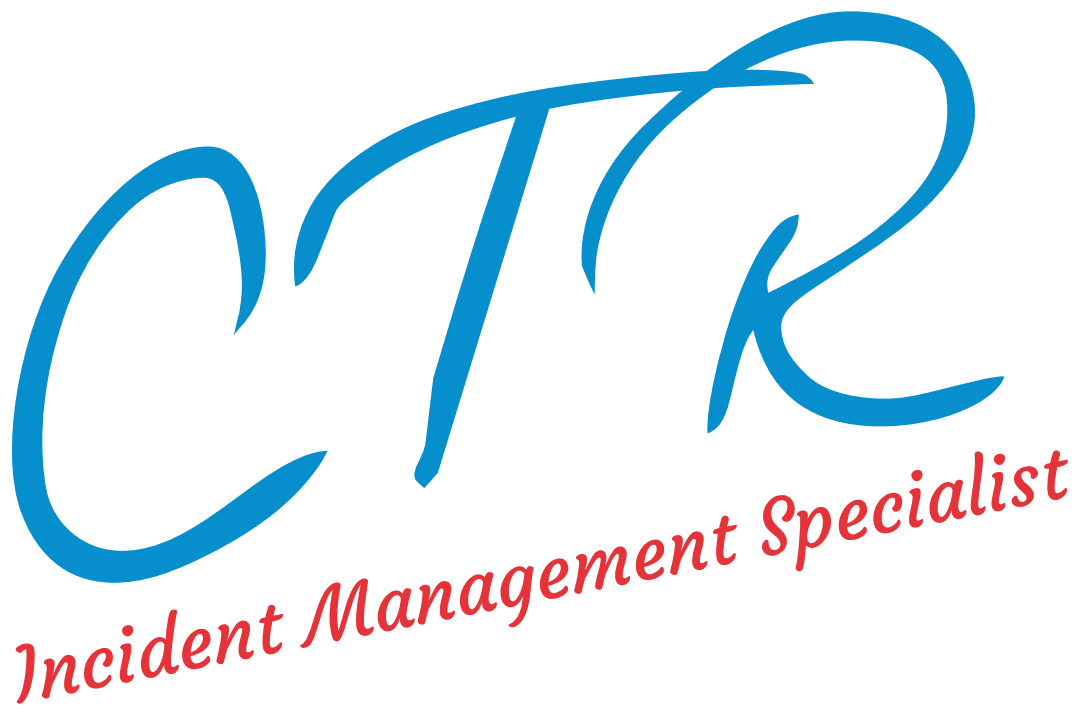The Work Doesn’t Stop at Sunset
The middle of the night isn’t quiet for us. While most folks are home and off the clock, we’re out running I-45 heavy towing jobs, staring down wrecks under blinking hazard lights and the hum of diesel engines. The job doesn’t pause just because the sun’s down. On the contrary, it gets harder. Heavy recoveries at night come with a different kind of pressure. Our radios light up with urgent dispatches. A tractor-trailer has lost its load. A construction hauler has overturned on an off-ramp. No two calls are ever the same, and the risks ramp up when we’re working under the glare of strobes instead of sunlight.

Reduced Light, Increased Risk
Night work means working in near-zero ambient light. We rely on our own lighting, for example, scene floods, strobes, and truck-mounted LEDs, to see what we’re doing. But headlights from oncoming traffic, reflections off signage, and shadows from our own equipment make that lighting difficult to work with.
Visibility issues make tasks like checking undercarriages, spotting fluid leaks, or confirming secure rigging more time-consuming and more critical. Even something as simple as reading terrain becomes harder in the dark.
Scene Control Comes First
Before we touch the casualty vehicle, we stabilize the scene. We place our trucks to block traffic and create a protected work zone. Lighting, signage, and cones go up first.
Tasks during setup usually include:
- Assessing vehicle position and stability
- Scanning for leaks or hazardous materials
- Setting up perimeter lighting and signage
- Identifying safe winch angles and anchor points
Without a secure and visible scene, recovery work can’t begin safely.
Weight + Night = Complication
Heavy vehicles bring added risk no matter the time of day. At night, those risks increase. A misjudged winch line or a strap under tension that slips in the dark can cause serious damage or injury.
When performing I-45 heavy towing at night, we account for more than just vehicle weight. Load distribution, terrain slope, and nearby traffic all factor into the recovery plan. We reassess each step before moving to the next.
Experience Is the Edge
Tools don’t make a recovery successful; experience does. We’ve run enough night shifts to know when to change approach, when to bring in a second truck, and when a rigging configuration doesn’t look right, even if it checks out on paper.
We’ve learned how to work with limited visibility, wet pavement, steep shoulders, and soft ground, all while staying aware of passing traffic just feet away.
Every Call Requires Full Attention
A single mistake during a heavy recovery can lead to hours of highway closure or equipment damage. That’s why we don’t treat any call as routine. Every job gets full attention, and we adjust for the unpredictability that comes with working in the dark.
I-45 heavy towing at night is a different kind of operation. It calls for more caution, more coordination, and more respect for what can go wrong.

Why CTR Towing Service Handles I-45 Heavy Towing the Right Way
At CTR Towing Service, we take I-45 heavy towing seriously, especially at night. Our crews are trained for low-visibility operations and know how to manage risk under pressure. We don’t show up guessing. We show up prepared.
Our I-45 heavy towing team plans, positions, recovers, and clears. All with safety at the center. That’s how we’ve earned the trust of drivers and dispatchers who call us when the stakes are high. If you need I-45 heavy towing in the dark, we’ve got the crew to get it done right.

